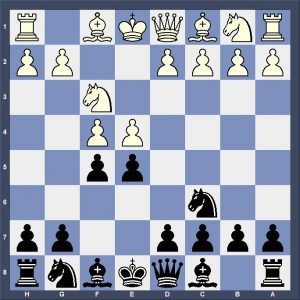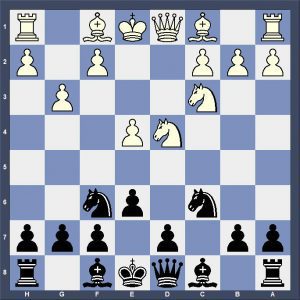As we all know, mainlines are mainlines for a reason. They form the consensus of a wide majority of players about where to search for quality. Or they already carry a firm approval of quality, if they are well tested. Mainlines are rich in positional themes and motifs. Learning a mainline means learning a position type, which directly translates into improving your chess understanding. That said, everything comes with a price. Playing mainlines is high maintenance and equates to a lot of studying. Chances are that your opponent is well prepared, as mainlines are permanently featured in theoretical discussions.
While I think that everybody should entertain a couple of mainlines for its positive sides, I am convinced that including quality sidelines is another important part of composing your opening repertoire, thus counterbalancing the negative aspects of a pure mainline repertoire. It is by no means easy, though, as you have to do a lot of research. Depending on your strength, you can do it on the level of direct investigation, using a strong engine or you might scrutinize professional offers instead. The tricky part is to not end up playing sidelines of bad quality. That’s why professional offers should also be checked by your engines.
So, what constitutes a quality sideline? I offer the following formula, using two of the elements for composing an opening repertoire, presented in post 42.
A quality sideline is a transitory phenomenon and the result of combining “quality” and “originality”.
The element of “originality” is important in more than one way. To start with, originality is the condition of a sideline per se, as these basically feature rarely discussed secondary themes of a position or introduce something completely new. “Originality”, in its temporal sense is also a condition of “quality”, when it comes to sidelines. Without “originality” a sideline cannot be of high quality. If a sideline is old and well tested (= not original) and still is no mainline, it cannot be particularly good. Each quality sideline is destined to perform a metamorphosis and will turn into a mainline one day, as the majority gravitates to quality. As far as I see, there are three different types of quality sidelines:
1) A newly discovered line
Discovering new lines is a challenge I always enjoyed to pursue. I already offered two examples here on the website. One was my refutation of the Flohr-Variation featured in post 6 and the other one my line against the King’s Indian Attack. Another example is the variation defined by the moves 1.e4 e5 2.f4 Nc6 3.Nf3 f5.

After the idea popped up in my head, I analyzed this position during my time in the army. If you ask Chess Base’s online database, I was the third man in history daring that move after a casual game of 1862 and a Swedish correspondence game of 1945. The fourth man to fight fire with fire or, more specifically, to counter romantic chess with romantic chess was Udo Käser. He was my room mate in the army. I later played a second game with that line around 1990/91 in Neu Isenburg, which is not included in the database. Some years later, when Tony Miles named this line “Adelaide Variation” after a game his friend Alexander Wohl played on that turf, I published my analysis in a New in Chess Yearbook, in order to secure my claims. Back in the days, I was young and hungry for a little bit of fame. At some stage, that line was even adopted by Nakamura. I recently had a look again and it came across slightly dubious.
Discovering completely new lines at an early stage of the opening is more difficult today than ever before, as the white patches on the map have been severely diminished and are few and far between. On the other hand, discovering something at all has become quite easy. Just follow the proposals of your engine.
2) An old line, which has been unduly neglected
There must be hundreds of such gems hiding under the surface. Many of them are already part of a top-player’s repertoire, waiting to meet their first victim.
3) A freshly reviewed neglected line
One example of this category is the line I included in my Four Knights repertoire against 6.g3.

That move only ranks on 7th place in the popularity list, but might rather belong as high as rank 3, which is occupied by the feeble 6.Be3. As I describe in my analyses, there is a bottleneck effect in place, which explains the low ranking. In any case, 6.g3 is a very serious approach. There are different options for Black, of which one is 6..d6, entering the g3-Scheveningen. That is a decent line, but requires some kind of knowledge about this rather difficult position type. It wouldn’t really harmonize with the stand-alone approach I pursued. My choice against 6.g3 is the line 6..Bb4 7.Bg2 0-0 8.0-0 d6!I call this a quality sideline.

As you might know, one of the charms of the Four Knights is the flexibility to either enter a Scheveningen position type or rather bet on active piece play by developing the bishop to b4 or c5, depending on White’s choice in move 6 or depending on taste. This line constitutes an interesting hybrid form. At the time of writing there are only 9 games available. The first one dates back to 1968, so it qualifies as a sleeping jewel. Regarding the jewel part, you must believe me for now or enter your own research. I claim that this line is not worse than any alternative and achieves equality. In contrast to other lines, however, it has the advantage of moving under the radar, as I might have been the first person to do a thorough investigation here.
